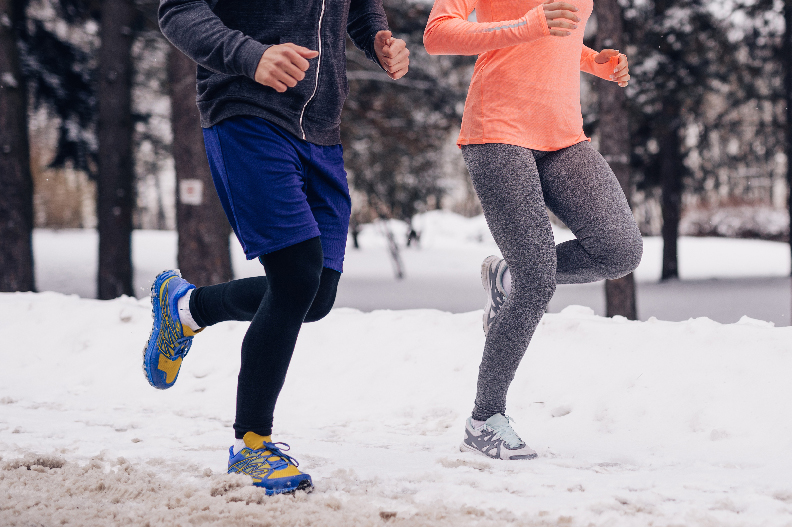Even the most motivated and regimented exercisers can fall out of healthy habits in the winter. It’s easy to understand why: December temperatures in the Sioux City region reach an average high of 30°, and regularly plummet into the teens. The sun rises late and sets early. The odds are stacked against us! Even so, a little preparation and adaptation will make worlds of difference. You might even find that outdoor exercise in the wintertime has its charms…no bugs and little humidity, for example. Follow our 5 quick tips for a safe and healthy winter workout routine!
1. Pay Attention to the Forecast
Generally, the risk of frostbite is less than 5% when the air temperature is above 5degreeF. However, it’s important to mind not only the air temperature but also the wind chill. Even with the appropriate warm clothing, a wind chill level below minus 18 degrees Fahrenheit can cause frostbite in a shockingly short amount of time. Choose indoor exercise if it is raining, snowing, or the wind chill reaches the negative teen digits.
2. Layer Up
When you exercise, you create a significant amount of body heat. Believe it or not, it is a common mistake to dress too warmly for winter workouts outdoors! Dress in layers that you can shed the moment you start to sweat and then put back on as needed. We recommend the layer closest to your skin be a thin layer of synthetic, sweat-wicking material. The second layer should be warm fleece or wool for maximum insulation.
3. Protect Hands, Feet, and Ears
Cold temperatures draw blood to the core of the body, leaving less circulation for the hands, feet, and ears. Perhaps you’ll want to invest in a half-size larger running shoe for the winter season to accommodate warm, thick socks. Try layering your gloves- you can always remove one layer when your body temperature starts to warm up! Never neglect your ears- they are at extreme risk of frostbite. Always opt for a hand or fleece exercise headband.
4. Stay Hydrated
It’s easy to focus on our thirst and prepare with plenty of fluids when we plan a summertime sweat session. In the winter, staying hydrated is just as important! Drink water before, during, and after your workout – even if you don’t feel thirsty. It can be harder to notice signs of dehydration during the winter months, so stay diligent!
5. Watch for Signs of Frostbite & Hypothermia
Frostbite most often occurs on the parts of the body that are exposed to the elements; cheeks, nose, ears, fingers, and toes are quite common. Be watchful for the early warning signs of frostbite, which can include numbness, loss of feeling, or a stinging sensation. If you suspect frostbite, it’s important to immediately go inside and warm up. Slowly warm the affected area while being careful not to rub or irritate the sensitive skin as it warms and heals. Hypothermia occurs when the body temperature becomes abnormally low. Signs include intense shivering, slurred speech, loss of coordination, and fatigue. If you believe yourself or a loved one is at risk of hypothermia, it’s best to seek emergency help right away.
Properly dressed and with the necessary precautions in mind, winter exercise can be quite refreshing. If possible, use your lunch break or well-lit, warmer times of day to enjoy the outdoors and fresh, chilly air in your lungs.


